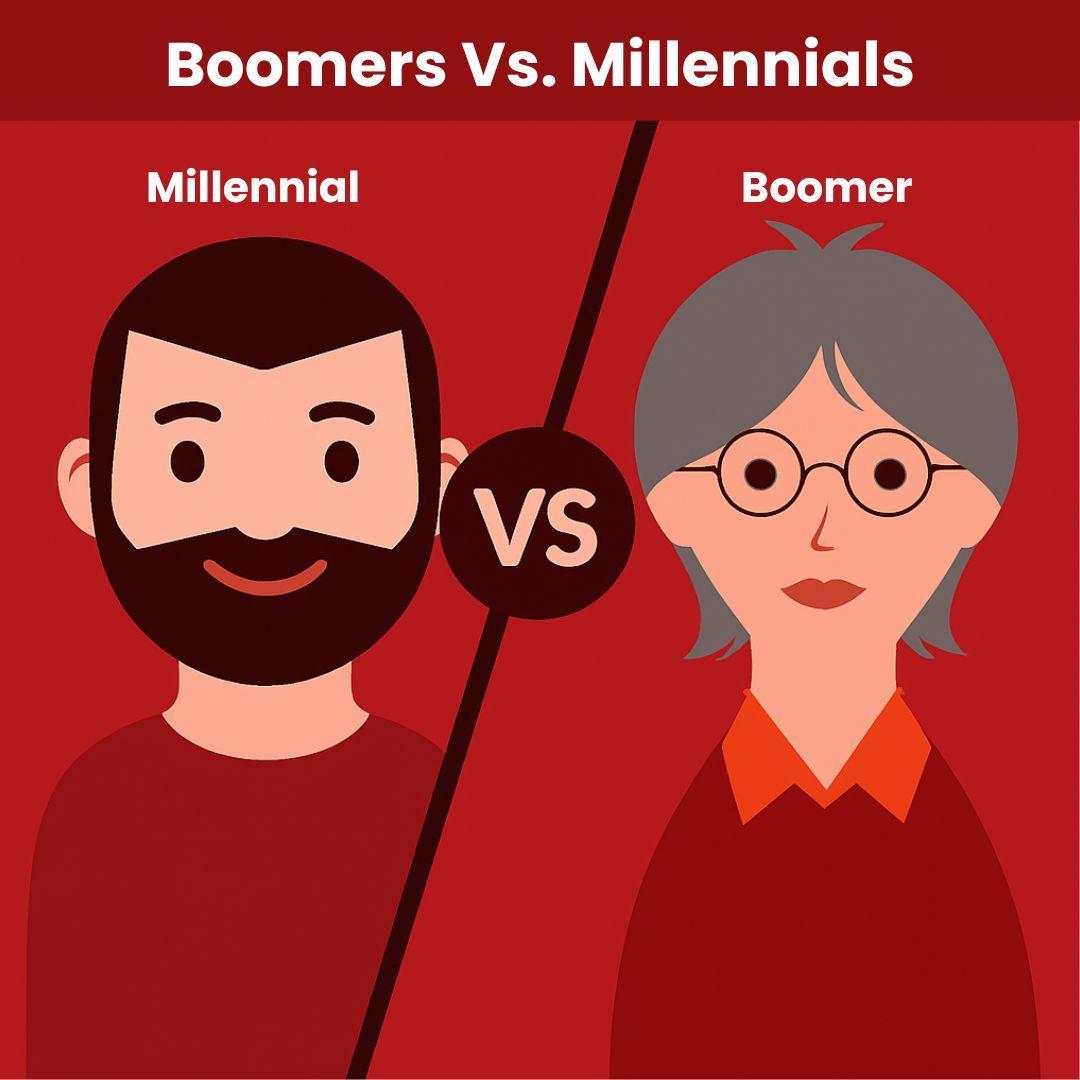Credit cards are more than just tools for spending—they reflect how different generations manage money, access credit, and leverage rewards. In Canada, the contrast between how millennials and baby boomers use credit cards reveals deeper trends in financial behaviour, digital fluency, and lifestyle priorities. From cash back strategies to borrowing habits, these generational credit card trends in Canada highlight how each group approaches credit differently. Understanding these differences can offer valuable insight into broader economic patterns and evolving financial preferences.
Credit Card Adoption and Attitudes: Trust vs. Convenience
Baby boomers tend to view credit cards as a symbol of financial stability. Many boomers came of age when credit was harder to access, which explains their cautious and responsible use. They are more likely to carry traditional cards with long histories and high limits, often using them as a backup or for large, planned purchases.
Millennials, on the other hand, treat credit cards as tools for convenience and rewards. This group grew up during the digital transformation of banking, making them more comfortable with online platforms and virtual cards. Millennials are also more likely to experiment with newer cards like the American Express Cobalt Card or the Tangerine Cash Back Card, using them frequently to accumulate points or cash back on everyday purchases like groceries, dining, and travel.
Spending Habits: Needs-Based vs. Lifestyle-Based
Boomers generally prioritise needs-based spending. Their credit card use often centres on essentials such as travel, home maintenance, or health-related expenses. They’re more likely to hold cards that align with these life stages, including travel-focused cards offering hotel loyalty programs or discounts.
Millennials are more lifestyle-driven in their spending, often using cards for everyday experiences. Many prefer options like the Amex Cobalt cash back or Tangerine credit card cash back to optimize frequent, small purchases. They’re also more likely to hunt for deals, whether through a Dell coupon code, or finding savings on platforms like AliExpress.
Rewards Preferences: Travel vs. Flexibility
When it comes to rewards, baby boomers often prefer travel-related perks, particularly if they are retired or semi-retired. Programs linked to flights and hotel stays remain especially popular among this group. In contrast, millennials tend to prioritize flexibility in their rewards. They often favor structures that provide immediate, tangible benefits such as cash back or discounts on everyday purchases. Many also explore modern ways to redeem rewards, including through online platforms where they can combine points with promo codes for extra savings.
Digital Integration and Mobile Wallets
Digital fluency is a defining trait of millennial credit card usage. This generation is quick to embrace mobile wallets, instant notifications, and app-based account management. They’re also more likely to track spending in real-time and automate payments. Products like the Wealthsimple Cash Card and virtual wallet integrations are often top of mind for millennials.
Boomers, while increasingly adopting digital tools, tend to prefer desktop access and are more comfortable receiving paper statements. Their slower adoption of mobile banking tools doesn’t indicate financial illiteracy, but rather a preference for tried-and-true methods. That said, many boomers are beginning to see the value of integrated apps for managing multiple accounts, especially when combining tools like the BMO Performance Chequing Account with a rewards credit card.
Borrowing Behaviour and Interest Management
One of the starkest contrasts in generational credit card trends in Canada lies in how debt is managed. Baby boomers typically avoid revolving balances and are more likely to pay off their statements in full. This approach often stems from a more conservative attitude toward debt, shaped by decades of experience with economic downturns and interest rate volatility.
Millennials, facing high living costs and student loan burdens, may rely more heavily on credit cards for short-term borrowing. While this can lead to higher balances, millennials also seek out cards with promotional interest rates or those offering balance transfer options. A growing number also explore business-friendly credit products like the Amex Business Platinum Card, especially among millennial entrepreneurs.

Credit Limits and Usage Ratios
Boomers generally enjoy higher credit limits due to long-standing credit histories and established income streams. They tend to keep their credit utilization low, which positively impacts their credit scores. Many also hold multiple cards with specific purposes—travel, emergencies, or supplementary household spending.
Millennials, especially those early in their credit journeys, often have lower limits but higher utilization rates. The appeal of top rated cash back credit cards with dynamic categories allows millennials to stretch the value of every CAD spent.
Brand Loyalty vs. Rewards Maximization
Boomers often demonstrate strong brand loyalty. Once they find a card that works for them—particularly one affiliated with their bank or a trusted brand—they are unlikely to switch. Cards like the Rogers World Elite Mastercard may appeal due to long-standing banking relationships or preferred merchant perks.
Millennials, however, are more willing to shop around for better deals, often comparing rewards rates, sign-up bonuses, and rebate opportunities. They might use the Amex Gold credit card for dining one month, and pivot to the Tangerine World Mastercard the next, depending on changing categories or promotional offers. Millennials also make full use of online platforms to track rebates or unlock limited-time perks with a Reitmans promo code or Expedia deal.
Evolving Outlook on Credit Card Purpose
For boomers, credit cards are largely practical tools—vehicles for established financial routines. Their primary focus is reliability, low fees, and security. Even those interested in rewards typically view them as a bonus rather than the main reason for choosing a card.
Millennials are reshaping this narrative. For them, credit cards are tools for earning, budgeting, and enhancing lifestyle. Whether it’s using an Amex cash back offer on dining, or finding rewards through different merchants, millennials view credit cards as essential to their daily financial strategies—not just emergency options or long-term debt mechanisms.
Credit Card Use Reflects Generational Shifts
Understanding how credit card use differs between millennials and boomers offers a window into broader societal and financial trends. Baby boomers emphasize financial security, brand trust, and long-standing habits, while millennial prioritise flexibility, rewards, and digital convenience. These distinct preferences shape the way Canadians interact with credit and demonstrate that one-size-fits-all financial tools simply don’t work across the board.
Security Concerns and Fraud Protection Preferences
Security plays a key role in how different generations choose and use credit cards. Baby boomers, shaped by an era of in-person banking, often prioritise cards that offer robust fraud protection and customer service from traditional institutions. Many still prefer the reassurance of physical cards and telephone support over digital interfaces.
Millennials, while equally concerned about security, place more trust in digital solutions. They are quicker to activate card controls via apps, monitor real-time alerts, and freeze cards instantly if needed. Many also seek out cards with built-in digital safeguards, particularly when shopping online through platforms. For this group, fraud prevention is about agile response and integration with their tech-savvy lifestyles.
Supplementary Cards and Family Sharing
When it comes to shared spending, baby boomers are more likely to use supplementary cards for partners or spouses—especially for travel or large household expenses. These shared accounts reflect traditional family structures and often tie into retirement planning, where joint financial access becomes more important. They may also extend card benefits such as travel insurance or hotel points through family add-ons, particularly with cards like Marriott Bonvoy credit cards.
Millennials, however, are more likely to share cards informally or use digital wallet solutions for joint purchases, particularly among roommates, partners, or in gig-based living arrangements. This generation prefers cards that allow seamless management of multiple users or offer flexible spending categories. Whether it’s splitting bills with a partner or earning Tangerine cash back on shared subscriptions, millennials lean into cards that support their more fluid financial arrangements.
Explore More with Great Canadian Rebates
At Great Canadian Rebates, we’ve seen how these generational differences translate into real-world credit card choices. With rising living costs and evolving digital tools, finding the right credit card is more relevant than ever—whether you’re focused on travel perks, everyday savings, or building credit.
That’s where we come in. Great Canadian Rebates is an online platform that provides information on a wide range of major credit cards in Canada. From premium options like the Platinum Card Amex to everyday value cards offering Tangerine cash back and many more, we make it easy to find, compare, and apply for the card that aligns with your financial needs. Members receive generous cash back rebates upon approval of credit cards applied for through our site.


